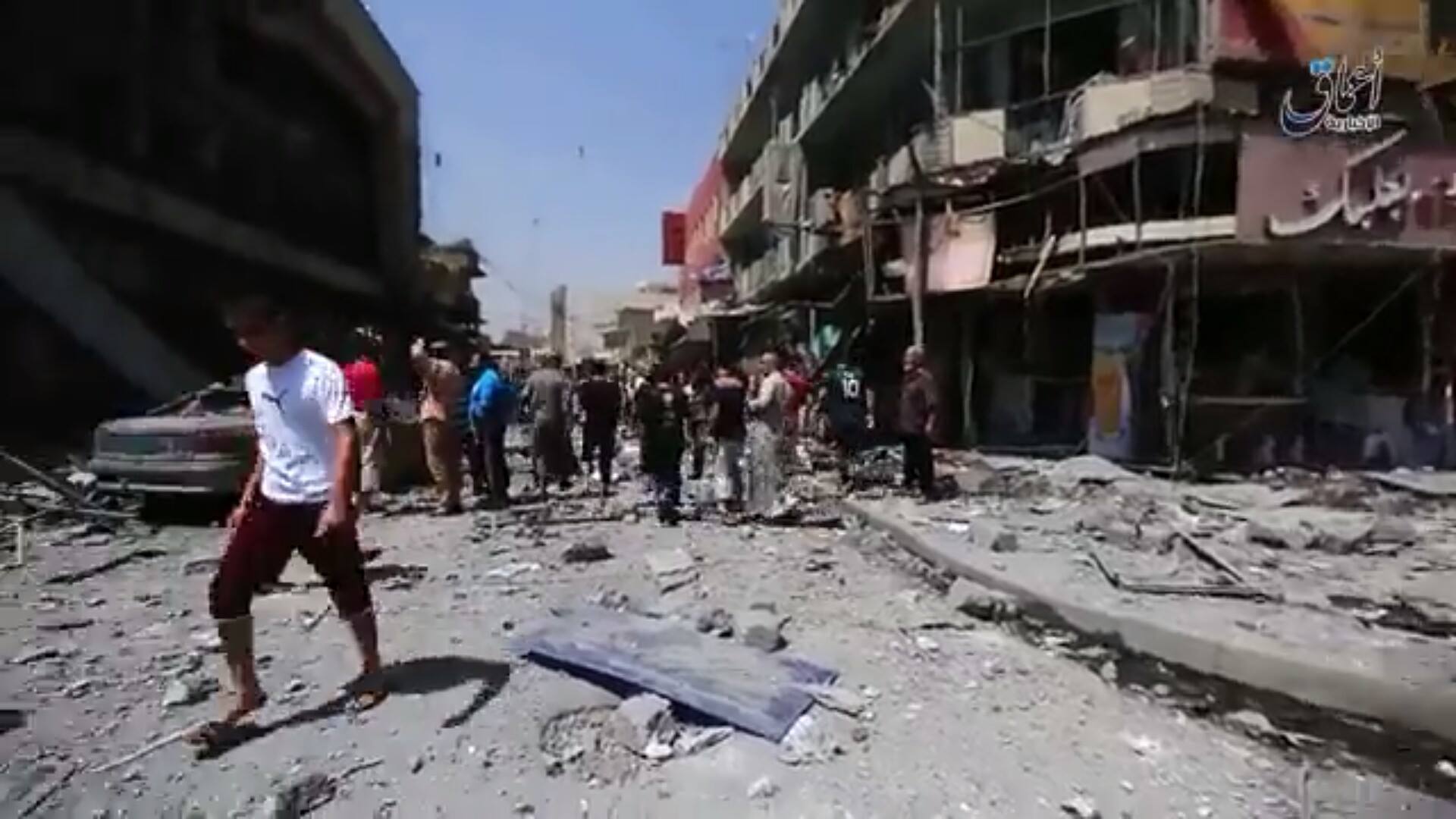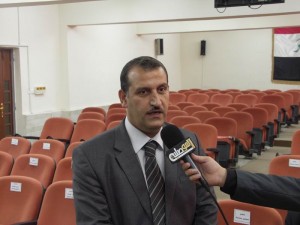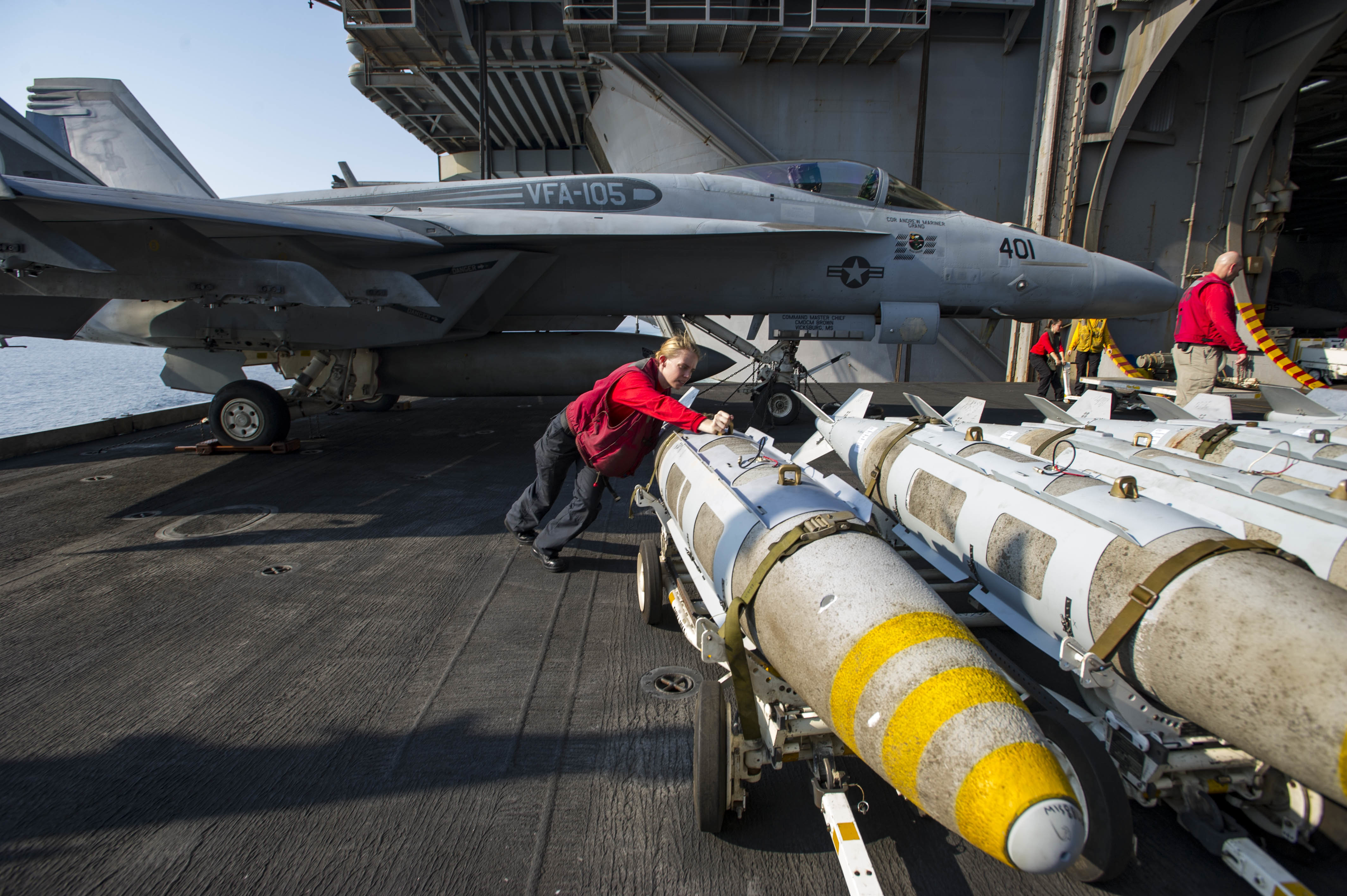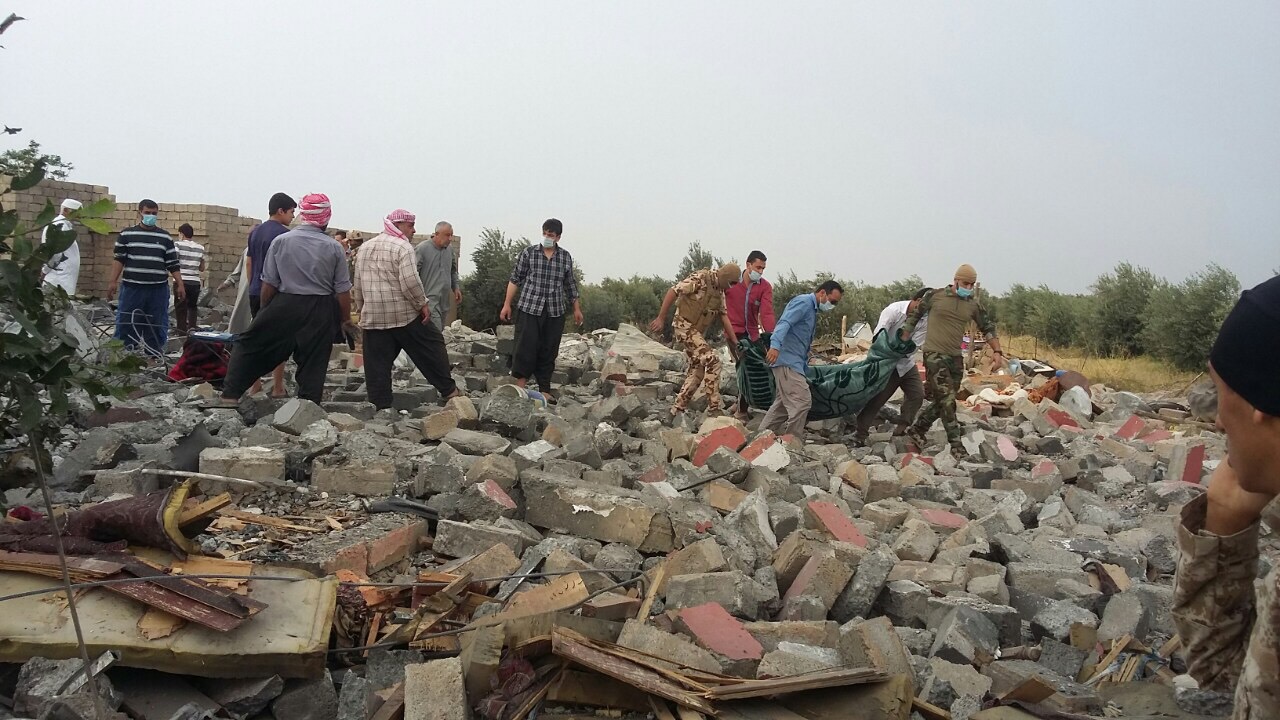The assault on Mosul by Iraqi and Kurdish forces – backed by the formidable air and artillery power of the US-led Coalition – marks the culmination of a two year campaign to oust so-called Islamic State from the country’s second city. Nowhere else in Syria or Iraq has been more bombed by the Coalition, and nowhere else has seen as many civilians likely killed by its actions. As the battle for control now enters Mosul’s suburbs, Airwars examines the price already paid by the city’s people – and at what might lay ahead.
Noora is still brought to tears at the mention of her preschool-age cousin, who was killed along with the girl’s mother during airstrikes on ISIL-controlled Mosul last year. A series of attacks appeared to target a site used by fighters from the group, but also ended up killing a number of nearby residents. Noora’s cousin was upstairs in the family home when her mother ran to retrieve her after an initial blast. They were both cut down by another explosion. “I’ll never forget the day I found out,” Noora recalls. “I felt like the life was being sucked out of me.”
Noora, who was born in Mosul and now lives in the United Kingdom, stayed in touch by Whatsapp with her grandparents, aunt and other family members still in the city until the end of August, when the internet was largely cut off. They now stay in touch intermittently, only when those in Mosul feel safe enough to use their phones. This month, Noora found out that another relative in their twenties had been killed in the same way – an airstrike. Airwars has withheld identifying details of the strikes at the request of the family, who fear potential punishment by ISIL.
The deaths of three members of Noora’s family represent a fraction of the more than 450 civilians estimated by Airwars researchers to have been killed in US-led Coalition actions in and around Mosul since November 2014.
Intense bombing campaign
While monitoring is difficult and imprecise in Iraq, Airwars researchers have so far tracked and attempted to vet 110 separate claimed civilian casualty incidents in Mosul itself in two years of airstrikes. Those attacks are alleged to have killed up to 1,300 civilians between them. While that number is likely too high, the baseline assessment of 469 civilian deaths in Mosul to date would be the single largest toll anywhere in Iraq or Syria – and represents a quarter of all likely civilian deaths from Coalition operations across both countries.
According to Coalition officials, its forces had already carried out 1,906 airstrikes on Mosul before the operation to capture the city from ISIL began on October 17th. Those actions had seen more than 9,000 ordnance dropped on a city which by all accounts still holds a million or more civilians. A ‘strike’, however, can be anything from a single aircraft dropping a single bomb on a single target, to multiple jets attacking an array of targets. On October 21st, the Coalition’s daily report lists four airstrikes near Mosul, which actually hit a total of 90 targets.
Despite this intense bombing campaign, US officials have admitted to just five civilian deaths in the city resulting from four separate actions. Airwars has been informed by US Central Command (CENTCOM) of additional investigations that are “pending,” but there is no timetable for their release. Yet these heavy attacks on a densely populated city have taken a far heavier toll – whatever the Coalition’s public claims.

Scene of destruction in Mosul on August 15th 2016, after a reported Coalition strike targeting an ISIL-occupied office building also severely damaged surrounding areas (NRN News via Al A’Amaq propaganda)
On August 15th 2016 the Coalition reportedly launched a number of strikes in the heart of Mosul – apparently targeting an office building, but also heavily damaging nearby structures. At least seven civilians were killed according to local accounts, including a young girl named Tieba Ammar Nizar Hayali. Images taken from ISIL propaganda videos showed a gruesome scene, including injured children as as well what appear to be fighters. Local Facebook posts recorded the names of other civilian casualties. In its own published report for August 15th, the Coalition simply notes that “Near Mosul, one strike produced inconclusive results.”
The Coalition’s public narrative – and that of senior politicians in the alliance – is one of highly targeted precision strikes which only kill the enemy. The reality for the people of Mosul has often been very different. In at least one attack – the January bombing of an ISIL-controlled bank in central Mosul – US officials had reportedly “been willing to consider up to 50 civilian casualties” due to the importance of the target: not a high value enemy commander, but millions of dollars in cash.

Professor Dhafer Ramadan Al Badrani was reported killed in an alleged Coalition strike on Mosul University on March 22nd 2016 (via Bashar al Talib)
Versions of that casualty calculus are apparent in other attacks. A series of daytime airstrikes in March of this year targeted the campus of Mosul University, which before ISIL’s takeover was Iraq’s second largest. In a statement referencing strikes on March 19th, the Pentagon said that an ISIL “headquarters” was located on the campus and that the group “has also been using the buildings as training areas, weapon manufacturing and storage facilities and communication equipment hubs… the Mosul university strike met all criteria, and was coordinated with the Government of Iraq before striking.”
According to assessments compiled by Airwars researchers, 25 or more civilians were likely killed in airstrikes at the university on March 19th and 22nd, including several professors. Dr. Dhafer Ramadan Al Badrani (pictured), a former dean, reportedly died along with his wife and daughter.
Whatsapp war
While several Syrian monitoring groups have tracked and attempted to name tens of thousands of civilians killed in that country’s civil war, there is far less comprehensive reporting in Iraq. In Mosul journalism must also be done in secret, and carries lethal risks. Last year, ISIL executed dozens of activists who had posted reports from the city on social media.
All of this makes it less likely that Western outlets will carry news of civilian deaths in Mosul, a city controlled by apocalyptic terrorists. But the daily bombings – on average slightly more than three ‘strikes’ per day – are still being documented by Moslawis themselves, through social media and messaging apps, or by posting death notices on Facebook.
For over two years, Noora has been part of Whatsapp chat groups with her family in Mosul. Late in 2015 (a few weeks after the roundup and murder of local activists) every family member in Noora’s chat group agreed to delete their messages – littered with references to airstrikes – in order to protect those still in the city who feared ISIS fighters might find the exchanges. The family has however allowed Airwars to review some of the more recent messages.
A text from late 2015 reads: “airstrikes were very powerful by our house, and next to my family’s house and the rockets passed over our heads… may God protect us.” Another wrote, “We are used to it, but what scares me the most is the sound of the planes”
This summer, Noora’s grandmother wrote that a bomb had hit near to their home, though she assured her family it was “nothing.” When Airwars reviewed the incident, researchers determined that – based on local reports – nearly a dozen civilians had likely died, some of them possibly her grandmother’s neighbours. Noora now believes her grandmother was playing down both the toll and the danger posed to her, in an effort not to scare the family abroad and elsewhere in Iraq. “It’s crazy, they are worried about us,” Noora says.
Rasha al Aqeedi, a research fellow at Al Mesbar Studies and Research Center in Dubai and another native Moslawi, says her own family in Mosul have tolerated the strikes – as long as there weren’t civilian victims. “The strikes have been accurate despite the complexity of the situation,” she assessed in a comment to Airwars. However, al Aqeedi added that she recently learned from Facebook that a schoolmate and her father had been killed in an airstrike this summer.
‘Human shields’
As government and Peshmerga forces push into Mosul’s suburbs, ISIL has already forced tens of thousands of villagers to retreat with them – effectively using civilians as human shields against airstrikes and artillery blasts. On November 1st, the UN’s human rights office accused ISIL of attempting to bus 25,000 more people nearer to the city. “We have grave concern for the safety of these and tens of thousands of other civilians who have reportedly been forcibly relocated by ISIL,” said spokesperson Ravina Shamdasani.
The scenarios feared most by human rights officials – massive ground fighting and airstrikes in a city jammed with tens of thousands of Iraqis who are effectively prisoners, in addition to the million residents like Noora’s family who remain in Mosul – could be a disaster.
Already, the Coalition has massively increased its bombing campaign. After releasing 9,331 ordnance in and around Mosul over two years, the Coalition launched more than 1,400 in the span of just five days following the official start of Iraqi government and Kurdish attempts to recapture the city on October 17th.

An October 27th picture of bombs aboard the US aircraft carrier Dwight D. Eisenhower – which is supporting the ongoing Mosul operation (US Navy/ Petty Officer 3rd Class Andrew J. Sneeringer)
For those who have lived under ISIL’s brutal rule, airstrikes long ago became a daily fact of life, the roar of jets at night followed by explosions sometimes distant, sometimes close by – and sometimes the last thing people hear.
“They have been sleeping in their basement for months,” Noora said of her relatives, who are members of the city’s middle class, and are relatively secular. “I know people think strikes are just starting, but my family has been scared shitless for months.”
The UN, which attempts to track casualties in Iraq, says airstrikes are extremely difficult to qualify and assign blame for, especially in Mosul. The organization’s Iraqi mission, UNAMI, estimates that airstrikes have been responsible for around five percent of all civilian casualties in Iraq since June 2014, or slightly more than 1,000. However, the organisation does not generally attribute responsibility.
“There are many actors involved in airstrikes (Iraqi, Iranian, international coalition),” Francesco Motta, UNAMI’s human rights chief wrote in an email to Airwars. “This means that often when we get reports of airstrikes (and in those instances where we can in fact confirm through reliable sources that an airstrike has taken place – irrespective of the casualties) it is often impossible to determine who many have been responsible for it.”
Motta said most airstrikes happen at night – a fact confirmed by residents of Mosul – and by the time a bomb hits its target the plane could be long gone. “In the absence of verifiable film footage of the aircraft/strike it is often very difficult to ascertain what has happened,” he said.
Airwars obtained a recent internal UNAMI weekly human rights report which includes an entry for an airstrike on October 2nd that “allegedly killed 19 civilians, including children in Mosul.” Another airstrike in Mosul on October 8th targeting “a company that produces plant seeds in an industrial area,” is alleged to have killed 10 civilians. But the UN agency was unable to attribute responsibility in either case.
A recent strike near Kirkuk highlights the reporting problem. On October 21st, in the midst of an ISIL diversionary assault on the city, an airstrike hit a Shia mosque in the nearby town of Duquq, killing at least 15 women. Initial reports blamed the Coalition. But officials categorically denied involvement, and the Iraqi government later announced it would carry out an investigation. Some reports claim the Iraqi pilot and navigator responsible have now been detained.
مقاتلات F16 السرب التاسع يستهدفون مركز عمليات لما يسمى #ولاية_نينوى في الموصل #دولة_الخرافة_مسحولة #IQAF pic.twitter.com/S46oeN3U2G
— IRAQI AIR FORCE (@iqAirForce) October 21, 2016
The video shows a recent Iraqi Air Force strike on Mosul
Iraqi forces are also known to act more recklessly and, according to UNAMI, to rely heavily on dumb bombs instead of the guided munitions mainly employed by Coalition jets. In late June, as a massive ISIL convoy fled newly recaptured Fallujah, both US and and Iraqi aircraft opened fire on the vehicles. Said by Iraqi authorities to contain the families of fighters, the Coalition reported that it avoided parts of the convoy to minimize civilian casualties. Even so its claim to have destroyed 117 vehicles was high. Yet this paled against the 798 vehicles the Iraqi government says it destroyed, releasing video of its gunships firing at the convoys. The civilian toll of those attacks remains unclear.
On the frontline
However the Iraqi air force asserts itself, the US-led Coalition has and will continue to carry out the majority of airstrikes as allied troops push into Mosul. Already, several strikes in locations outside and within the city have resulted in civilian fatalities.
Airwars’ own Iraq-based researcher recently spent a week on the frontlines, where he saw entire villages destroyed by the fighting, and spoke with witnesses to airstrkes that left civilians dead. One, a local teacher, told Airwars that airstrikes on October 22nd or 23rd in the vicinity of Bashiqa left dead among several families. The teacher, from Bashiqa, described the ordeal he endured: “He told me how they survived and spent three nights under the stairs to avoid the airstrikes – airstrikes which targeted every moving thing in the village,” recalls the researcher.
Another incident in the village of Fadhiliya left eight members of a single family dead including three children. Uncovered by the Guardian, that incident left the family’s home reduced to rubble. The Coalition says it carried out strikes in the “area described in the allegation,” and is investigating.

Bodies are removed from the scene of a reported Coalition airstrike at Fadhiliya near Mosul, which killed eight members of one family on october 22nd 2016 (Picture courtesy of Fazel Hawramy)
As the battle for Mosul pushes into the city, air and artillery strikes risk killing many more civilians. ISIL has also telegraphed its intent to use non-combatants as ‘human shields’. In recent days the group’s fighters have executed hundreds, and brought tens of thousands more civilians with them as they have retreated from Mosul’s outlying villages.
“ISIL deliberately bases itself in civilian areas and civilian infrastructure (even within private homes and other infrastructure such as schools) with the direct intention of either ensuing civilian casualties if they are attacked or to shield their fighters,” noted Francesco Motta, UNAMI’s human rights chief.
Motta says the UN is also concerned about the continued enslavement of as many as 3,000 Yezidis, captured during ISIL’s blitz through northern Iraq in 2014. “We have serious concerns as to what ISIL might do to them if it looks like their control is about to collapse,” said Motta in an email earlier this month. “We fear that ISIL might decide to kill these people rather than see them freed.”
It is unclear how many Yazidis and other imprisoned civilians remain in Mosul, though they too could be placed near military targets. The UN recently warned that ISIL were holding “captive nearly 400 women from Kurdish, Yezidi or Shi’a Muslim communities in Tal Afar” – about 60km west of Mosul, and the site of Coalition strikes.
On November 1st, Iraqi troops first reportedly breached the official city limits. Still inside Mosul, Noora’s family awaits with trepidation what will come. Noora remembers one recent Whatsapp audio message in particular, left by her grandmother:
“She started crying as she wished all of us happy Ramadan. She just broke down and started sobbing. She was saying I hope I can see you one day, that we can be together one day and see each other in person. That seemed quite impossible.”
